Originally created as Zen Buddhist temple cuisine, Kenchinjiru (Japanese Vegetable Soup) is a clear soup with root vegetables, tofu, shiitake, and kombu stock. It’s a well-balanced and flavorful soup for a plant-based meal on a cold night. {Vegan}

If you’re experiencing cool weather, a nice hot bowl of hearty vegetable soup will really warm you up. Today’s recipe is a traditional dish called Kenchinjiru (けんちん汁) that’s a clear Japanese soup made with root vegetables and tofu.
Kenchinjiru is a simple yet substantial soup that’s surprisingly full of flavor and textures. This plant-based dish will become your new favorite meal on a cold night!
Table of Contents
What is Kenchinjiru?
Kenchinjiru or Kenchin-jiru is a vegan/vegetarian soup that was originally considered shōjin ryōri (精進料理) or traditional Buddhist temple cuisine. Its name derives from the Zen Buddhist temple Kencho-ji (建長寺) in Kamakura, Japan. Jiru means soup in Japanese.
To add depth, this dish uses a vegan dashi of kombu and shiitake mushroom instead of the fish-based dashi typically used in Japanese cooking. Despite being meatless, Kenchinjiru is full of flavor and different textures from the root vegetables. Lastly, the shiitake mushrooms and tofu absorb all the delicious flavor of the broth.
Ingredients for Kenchinjiru
- kombu (dried kelp), shiitake, and water – for the vegan dashi
- firm tofu
- konnyaku (konjac)
- daikon radish
- carrot
- satoimo (taro)
- gobo (burdock root)
- toasted sesame oil
- sake, kosher salt, and soy sauce
- green onions/scallions – for garnish
- shichimi togarashi (Japanese seven spice) and Japanese sansho pepper – optional, for a spicy kick
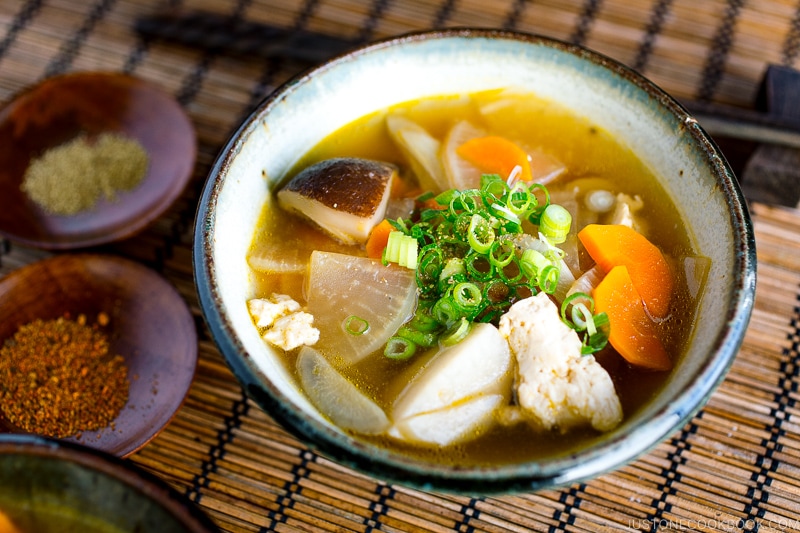
Kenchinjiru Variations and Substitutions
- Make it with miso. Originally, this is a clear soup made with soy sauce. However, you can also make it with miso, especially if you prefer a bolder flavor for your soup.
- Add chicken or pork. You can include meat protein to make it similar to tonjiru, a miso soup with pork and vegetables that’s my favorite kind of miso soup. However, I like my Kenchinjiru to be very simple with just vegetables without meat.
- Change up the veggies. This soup includes traditional Japanese root vegetables for flavor and texture. However, you can use any vegetables you wish to make it your own.
How To Make Kenchinjiru
- Make the kombu dashi. Start the night before, if you have time.
- Start the shiitake dashi. Rehydrate the dried shiitake in a small bowl of measured water.
- Drain the tofu wrapped in paper towels between two plates for 30 minutes.
- Cut the konnyaku into bite-size pieces with a spoon and boil for 2–3 minutes.
- Peel and cut the root vegetables.
- Squeeze out the mushrooms and quarter the caps. Strain the soaking liquid through a sieve; this is shiitake dashi.
- In a large pot, sauté the root veggies and konnyaku in sesame oil. Add the mushrooms.
- Tear the tofu with your fingers and add to the pot.
- Add the shiitake dashi and kombu dashi. Boil, then lower the heat to simmer for 10 minutes. Skim the foam and scum off the surface with a fine-mesh strainer.
- Season with sake, kosher salt, and soy sauce.
- Serve and garnish the soup with sliced green onions.
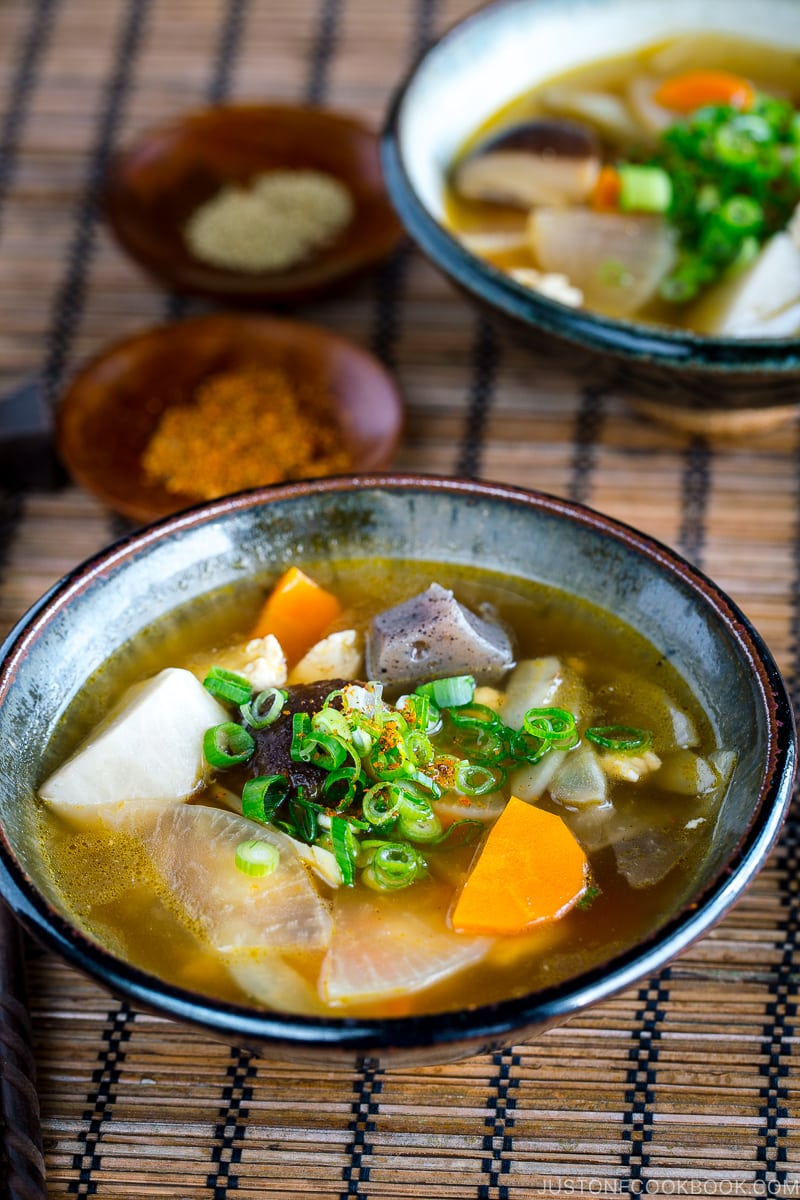
Cooking Tips and Techniques for Kenchinjiru
- Cut the konnyaku with a spoon. When you cut konnyaku with a spoon, it increases the surface area, which creates a higher rate of absorption of the delicious stock and seasonings. I learned this technique from my mom!
- Tear the tofu with your fingers. My mom also taught me that tearing the tofu creates more surface area than cutting it with a knife. It helps absorbs more flavors. Using the same logic, I stir-fry the tofu a little bit in sesame oil to get a nice coating on them.
- Don’t skip the gobo and daikon. The typical ingredients include different kinds of root vegetables. Among them, gobo and daikon are important to add flavor and textures to the soup. Both are easily accessible in Asian supermarkets.
- Clean the soup’s foam for a clear broth. In Japanese cooking, we skim the scum and foam from stocks to yield a clean liquid to give soups, hot pots, and stews a refined taste and clear appearance.
This hearty soup has plenty of different flavors going on, just like a stew. I hope you enjoy it!
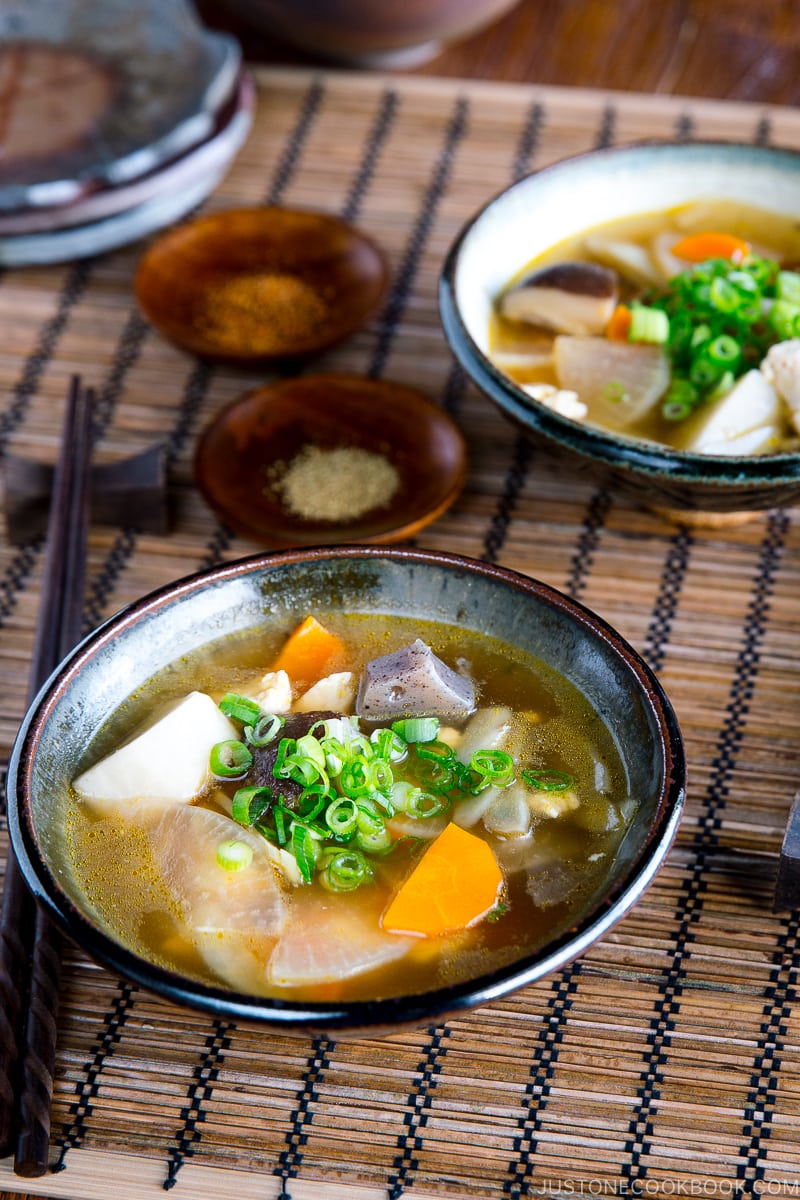
Other Recipes You’ll Love
Wish to learn more about Japanese cooking? Sign up for our free newsletter to receive cooking tips & recipe updates! And stay in touch with me on Facebook, Pinterest, YouTube, and Instagram.
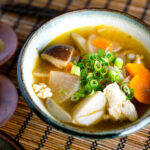
Kenchinjiru
Video
Ingredients
For the Vegan Dashi
- 1 piece kombu (dried kelp) (4 x 4 inches, 10 x 10 cm per piece)
- 5 cups water (for the kombu)
- 3 dried shiitake mushrooms
- 1 cup water (for the shiitake)
For the Soup
- 7 oz firm tofu (½ 14-oz block)
- ½ package konnyaku (konjac) (4.6 oz, 130 g)
- 7 oz daikon radish (2 inches, 5 cm)
- 3.5 oz carrot (1 medium)
- 3 pieces taro (satoimo)
- 3.5 oz gobo (burdock root) (½ gobo)
For the Seasonings
- 1 Tbsp toasted sesame oil
- 3 Tbsp sake
- ½ tsp Diamond Crystal kosher salt
- 2 Tbsp soy sauce
For the Garnish
- 2 green onions/scallions
- shichimi togarashi (Japanese seven spice) (optional)
- Japanese sansho pepper (optional)
Instructions
- Gather all the ingredients.

To Prepare the Ingredients
- The Previous Night: Gently clean 1 piece kombu (dried kelp) with a damp towel. NEVER wash kombu and do not remove the white powder (that’s where the umami flavor is). These days, kombu is pretty clean. Soak the kombu in 5 cups water overnight. If you don’t have time, skip soaking and go to the next step.

- The Next Day: Slowly bring the kombu and water to a boil. Right before the water boils, remove and discard the kombu. Turn off the heat and set it aside.
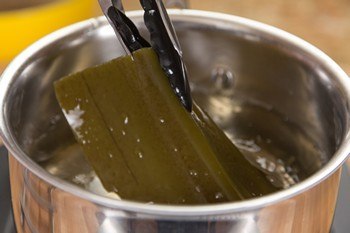
- Put 3 dried shiitake mushrooms in a small bowl and cover with 1 cup water. Place a smaller bowl on top to keep the mushrooms submerged.
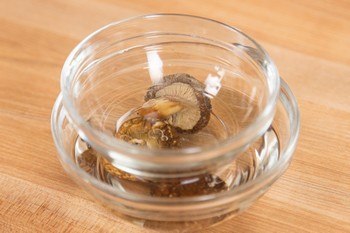
- Wrap 7 oz firm tofu with a paper towel and place it on a plate. Put another plate on top to press the tofu. Drain for 30 minutes.

- Meanwhile, cut ½ package konnyaku (konjac) into bite-size pieces. You can use a spoon to cut the konnyaku. By giving the konnyaku an uneven texture, the surface will absorb more flavor. Then, boil for 2–3 minutes to get rid of the odor. Drain the water and set it aside.

- Peel 7 oz daikon radish, 3.5 oz carrot, and 3 pieces taro (satoimo). Cut the daikon in quarters lengthwise and the carrot in half lengthwise. Slice them thinly crosswise so they will cook faster. Cut the satoimo into about ¼-inch (6-mm) slices and soak in water to get rid of the slimy texture.

- Scrape the skin off 3.5 oz gobo (burdock root) with the back of a knife under running water. Cut in half lengthwise and thinly slice diagonally. Soak in water for 5 minutes and drain.

- When the shiitake mushrooms are soft and hydrated, squeeze out the liquid and set aside the mushrooms. Strain the soaking liquid through a fine-mesh sieve to get rid of any particles. You now have shiitake dashi. Set it aside.

- Remove and discard the stems of the shiitake mushrooms and cut the caps into quarters.

To Cook the Kenchinjiru
- Heat a large pot and add 1 Tbsp toasted sesame oil. Sauté the daikon, carrot, taro (satoimo), gobo (burdock root), and konnyaku until the oil coats the ingredients.

- Then, add the shiitake mushrooms. Tear the tofu with your fingers and add to the pot. (If you are using silken tofu, use a knife to cut and add it right before serving.) Tofu will absorb more flavor when it is torn by hand. Sauté until all the ingredients are coated with the oil.

- Add the shiitake dashi and kombu dashi. Bring it to a boil.

- Turn down the heat to simmer. Cook for 10 minutes, skimming occasionally. Use a fine-mesh strainer to skim the foam and scum on the surface. Tip: Fill a measuring cup with water and clean the strainer in it. Change the water when it gets dirty.

- After 10 minutes, add 3 Tbsp sake and ½ tsp Diamond Crystal kosher salt and continue to cook until the vegetables are all tender. Finally, add 2 Tbsp soy sauce.

To Serve
- Right before serving, thinly slice 2 green onions/scallions. Serve the soup and garnish with scallion. Sprinkle with optional shichimi togarashi (Japanese seven spice) and Japanese sansho pepper, if you like it spicy.

To Store
- You can keep the leftovers in an airtight container or the pot and store in the refrigerator for 2–3 days.
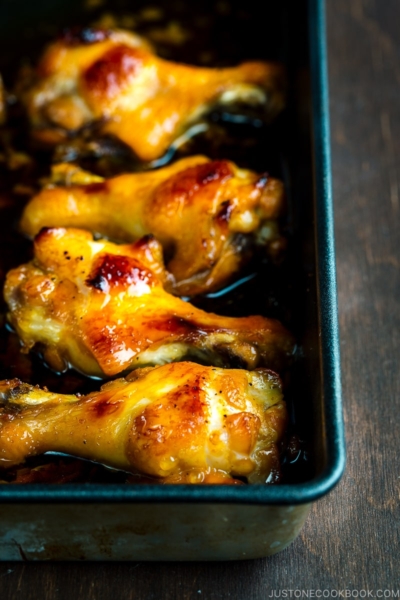
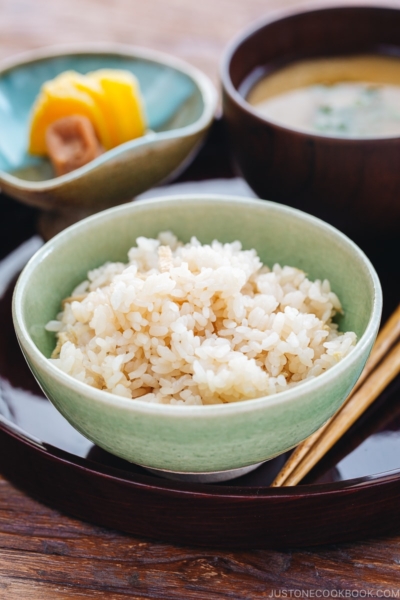
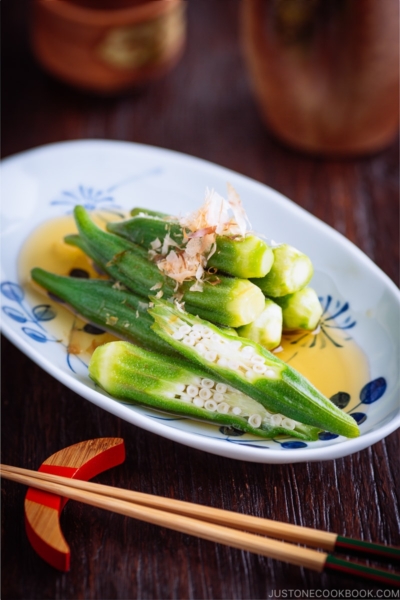
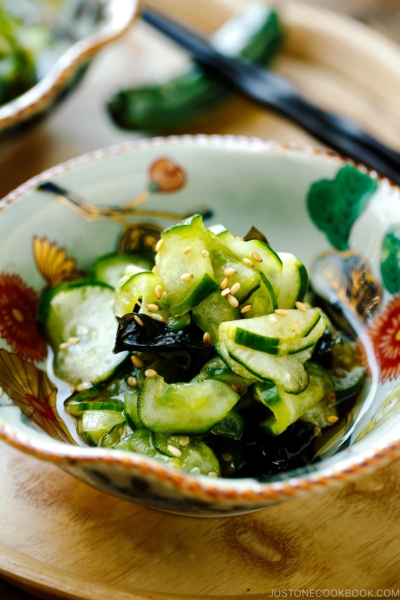





Very good
Hi Cornelia! Thank you for trying Nami’s recipe!
We are so happy you enjoyed the dish! 🤗
Hi there Nami,
is there a substitute for sesame oil? What to do if you discover that you’re out of sesame oil and got no time to buy one in time for the meal? Could it be replaced by another oil and sesame seeds? They could be roasted. I yet got no mortar, so I couldn’t make sesame paste, but I always got harina in my fridge. When I think about it, there is always some oil above, I could use this. But there is no guarantee that I can make it taste roasted, guess this doesn’t work. With the harina perhaps could work, but then there is no oil. Hm.
You could think of a soluccion? I wanted to post it in your article about sesame oil, but there are no comments.
Thank you!
Hello, Anna! Thank you for taking the time to read Nami’s post!
The most suitable way to replace sesame oil is to roast sesame seeds in vegetable oil to increase the flavor of the oil. However, depending on the recipe, this may not be necessary.
For example, in this Kenchinjiru dish, you can simply replace the sesame oil with another neutral oil and season with ground sesame if preferred.
Here is a list of recommended neutral oils. We hope this helps!
https://www.justonecookbook.com/best-neutral-oil-for-cooking/
This is really good! But I love soup in general so it’s easy for me to enjoy. I used western sweet potato as that’s what I had. It didn’t fall apart, but it was definitely softer than the daikon and other vegetables. Next time if I use it again I’ll add the western sweet potato later in the cooking. The sichimi togarashi was a perfect touch for serving. Thanks for another great recipe!
Hi Marlene, Thank you so much for trying Nami’s recipe and sharing your cooking experience with us!
Made this tonight, not expecting to be a big fan since I really don’t care for soups much! I liked it! I actually found all the ingredients except for the burdock, but it didn’t matter at all. Thank you for a new addition to my Japanese recipe files!
Hi Debra! Thank you for trying Nami’s recipe and sharing your cooking experience with us!
We are so glad to hear you enjoyed the Kenchinjiru. 🙂
Happy Cooking!
Hiya! I’m just wondering if gobo root is supposed to be so slimy. I live in the UK so I got mine from a local Asian grocery and I’m hoping the sliminess is normal as I’ve never cooked it before. Thank you for the recipe 🙂
Hi Toni! No, the gobo is not a slimy root vegetable at all. Was it kept in the bag? Was it moist inside the bag? If so, it could develop sliminess, just like how other vegetables would in such conditions.
Hello, perhaps you bough Chinese yam? When I was first time looking for gobo I almost bought Chinese yam as it looked so similar. And achieve yam is slimy. If it is Chinese yam, you can use it in souls next time.
I love this soup recipe but I tried it without the taro and konnyaku coz I could not find the taro here and I personally don’t like konnyaku much. I added enoki mushroom Not sure the difference in the taste but I still enjoyed the soup with a hot bowl of rice. Thank you so much for the great recipe.
Hi Indy! We are glad to hear you love this recipe!
If you can’t find the Taro, Potato would work well too. As for Enoki, if you don’t add too much, it shouldn’t make much difference in the taste.
Thank you very much for trying Nami’s recipe! 🤗
Nami-san: Yes. I tried this recipe yesterday. It was delight for the cold weather. I didn’t have GOBO. I substituted it with Lotus root. I didn’t have konjac. I tried making one using potato; it was a failure. it dissolved into the soup totally 🙂 I will explore more. but lovely recipe. I never knew that these root veggies can create such lovely soup. cheers
Hi Raj! Thank you very much for reading Nami’s post and trying her recipe!
Nami and all of us at JOC are so happy to hear you enjoyed root vegetables!
Homemade Konnyaku sounds amazing too.😊
Hi Nami! I’m so excited I found this recipe. When I lived in Yamaguchi years ago I took a cooking class and learned a local dish call ‘Kencho’ that was simmered root vegetables with hand-torn tofu, but it was more of a stew or simmered side dish, less of a soup. We ate it with rice, in the same way we ate curry rice. Do you think it was originally Kenchinjiru and in the Yamaguchi region became the Kencho that I learned?
Hi Mia, Thank you very much for reading Nami’s post!
The Kencho is local dishes of Yamaguchi Prefecture and also one of Shōjin ryōri (精進料理) or traditional Buddhist temple cuisine, just like this Kenchinjiru. So it may have some connection through the temple, but the relationship between the two is currently unknown.
Thank you for sharing your thought! It’s interesting…
This soup was so comforting! Reminded me of soups my mom made when I was young. Thank you so much; this will be a keeper for me. With the togarashi, it was perfect!
Hi Dorothy,
Aww… we are so happy to hear it tasted like your mom’s homemade soup, and you enjoyed it.
Thank you very much for trying this recipe and for your kind feedback!